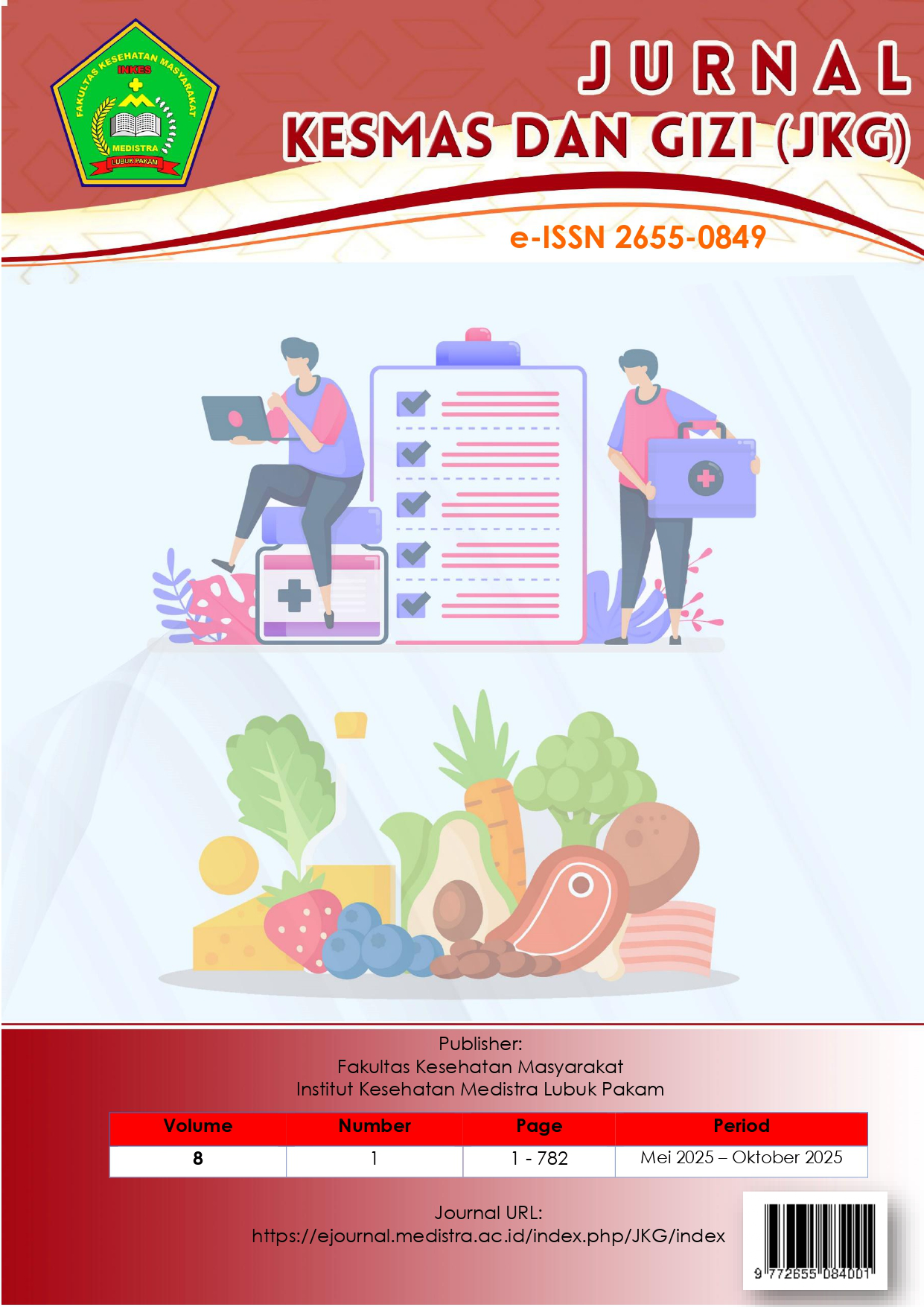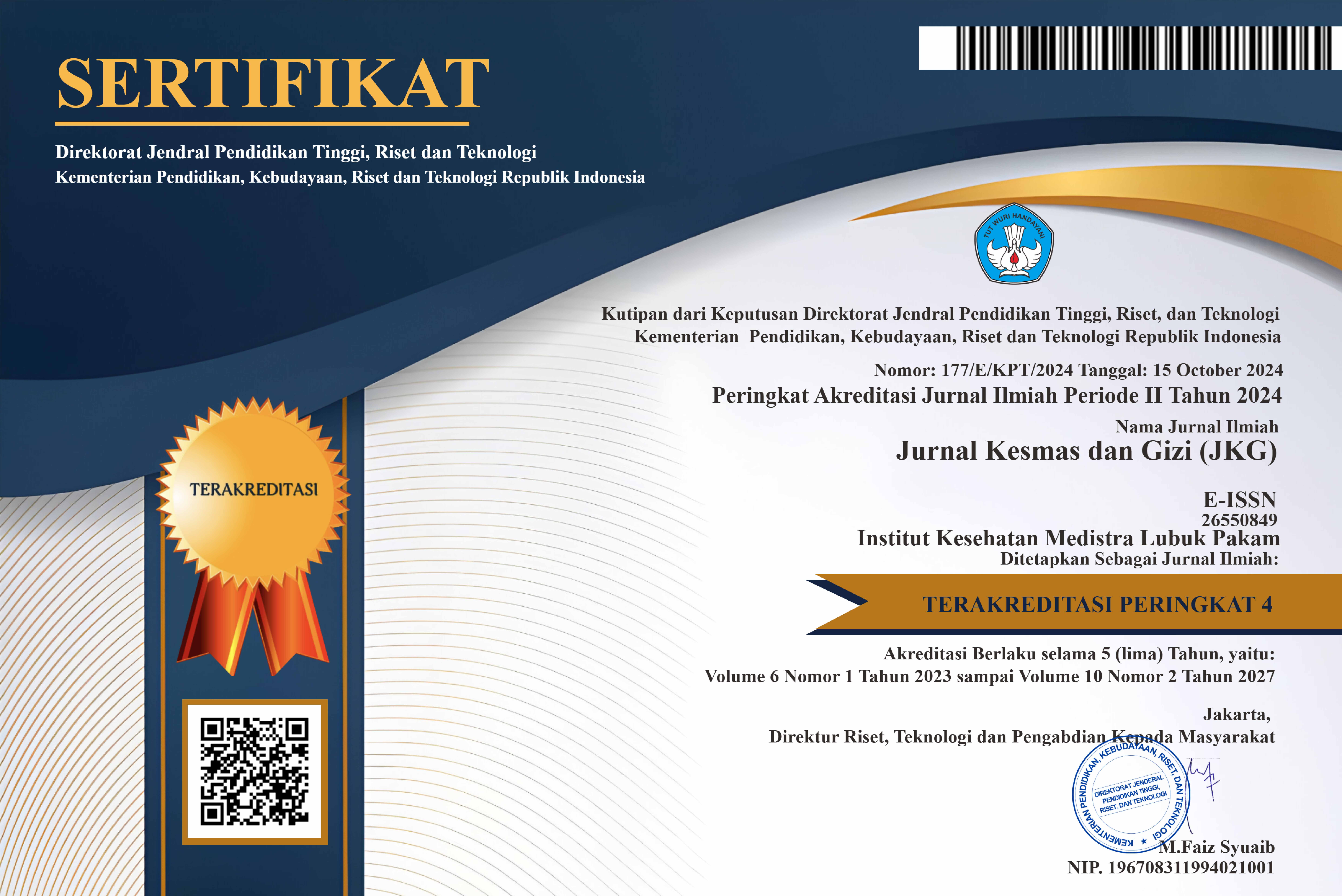Implementation of Congenital Hypothyroidism Screening Program at Community Health Center
DOI:
https://doi.org/10.35451/yn7ka993Keywords:
Congenital Hypothyroidism Screening, Patient Safety, Program Implementation, Healthcare ServicesAbstract
Background: The implementation of the Congenital Hypothyroidism Screening (SHK) program at UPTD Puskesmas Tebing Syahbandar has not yet achieved the target of screening 100% of newborns, with coverage rates of only 1.36% in 2023 and 15% in 2024. Several challenges hinder the program’s effectiveness, including limited resources and resistance from parents.Objective: This study aims to analyze the implementation of the SHK program at UPTD Puskesmas Tebing Syahbandar, identify the factors contributing to the low screening coverage, and propose recommendations for improving the program’s effectiveness and achieving the desired target. Research Method: A qualitative approach is used in this study, employing in-depth interviews with informants including healthcare workers, midwives, and the head of Puskesmas. The data collected was analyzed to identify key themes and factors affecting the program’s implementation. Results: The findings indicate that while the SHK program follows the guidelines set in Permenkes No. 78/2014, it faces significant barriers such as insufficient supply of screening materials (e.g., filter paper), limited training for healthcare personnel, and lack of comprehensive education for parents. These issues result in low participation rates and missed opportunities for early detection of congenital hypothyroidism. Conclusion: Addressing the challenges related to material availability, enhancing healthcare worker training, and improving communication and education for parents are essential to reaching the program’s target of 100% screening coverage.
Downloads
References
[1] World Health Organization (WHO). (2022). Global Health Observatory Data Repository: Neonatal Health and Mortality Statistics. Geneva: World Health Organization.
[2]. Kementerian Kesehatan Republik Indonesia (Kemenkes RI). (2022). Profil Kesehatan Indonesia 2022. Jakarta: Kementerian Kesehatan Republik Indonesia.
[3]. Brock, J., Smith, J., & Taylor, A. (2016). Prevalence of Congenital Hypothyroidism and the Importance of Early Screening: A Global Overview. Journal of Neonatal Health, 31(4), 104-113.
[4]. Perkumpulan Endokrinologi Indonesia (PERKENI). (2020). Pedoman Skrining Hipotiroid Kongenital pada Bayi Baru Lahir. Jakarta: PERKENI.
[5]. World Health Organization (WHO). (2016). Neonatal Screening for Hypothyroidism: Guidelines and Best Practices. Geneva: World Health Organization.
[6]. Kementerian Kesehatan Republik Indonesia (Kemenkes RI). (2023). Survei Kesehatan Indonesia 2023. Jakarta: Kementerian Kesehatan Republik Indonesia.
[7]. Kementerian Kesehatan Republik Indonesia. (2014). Peraturan Menteri Kesehatan Nomor 78 Tahun 2014 tentang Skrining Hipotiroid Kongenital pada Bayi Baru Lahir. Jakarta: Kementerian Kesehatan Republik Indonesia.
[8]. Brown, S. A., et al. (2017). Improving Communication with Parents in Neonatal Screening Programs. Journal of Public Health Communication, 45(2), 110-118.
[9]. Choi, B., & Park, J. (2017). Effective Health Education Strategies for Parents in Neonatal Screening Programs. Health Communication Journal, 35(1), 26-34.
[10]. World Health Organization (WHO). (2016). Global Health Recommendations for Early Diagnosis and Screening. Geneva: World Health Organization.
[11]. Smith, P. R., & Liu, L. (2018). Evaluation and Monitoring in Health Programs: A Review of Methods and Applications. International Journal of Health Policy, 15(4), 128-135.
[12]. Kementerian Kesehatan Republik Indonesia. (2023). Survei Kesehatan Indonesia 2023. Jakarta: Kementerian Kesehatan Republik Indonesia.
[13]. Kementerian Kesehatan Republik Indonesia. (2014). Peraturan Menteri Kesehatan No. 78 Tahun 2014 tentang Skrining Hipotiroid Kongenital pada Bayi Baru Lahir. Jakarta: Kementerian Kesehatan Republik Indonesia.
[14]. Brown, S. A., et al. (2017). Improving Communication with Parents in Neonatal Screening Programs. Journal of Public Health Communication, 45(2), 110-118.
[15] Wibowo, A., & Supriyanto, Y. (2020). Health Education and Parents' Compliance in Neonatal Screening Programs. Indonesian Journal of Health Education, 28(1), 15-22.
[16] Choi, B., & Park, J. (2017). Effective Health Education Strategies for Parents in Neonatal Screening Programs. Health Communication Journal, 35(1), 26-34.
[17]. Mulyani, L. (2020). Challenges in Neonatal Screening Implementation in Indonesia. Journal of Indonesian Public Health, 22(3), 72-80.
[18]. Smith, P. R., & Liu, L. (2018). Evaluation and Monitoring in Health Programs: A Review of Methods and Applications. International Journal of Health Policy, 15(4), 128-135.
[19]. Harrison, P., et al. (2020). Barriers to Effective Neonatal Screening Programs in Developing Countries. International Journal of Pediatrics, 58(7), 432-440.
[20]. Bennett, J., et al. (2018). Medical Supplies Shortage and Its Impact on Neonatal Health Programs. Journal of Global Health, 29(2), 55-61.
[21] Greenwood, J., et al. (2019). The Role of Healthcare Worker Training in the Effectiveness of Neonatal Screening Programs. Health Services Research, 44(5), 1045-1054.
[22] Muller, M., et al. (2017). Social and Educational Factors in Neonatal Screening Program Success. Journal of Health Education Research, 39(3), 45-54.
[23] Johnson, R., & Lee, A. (2020). Improving Funding and Training for Neonatal Screening Programs. Public Health Management, 62(1), 22-29.
[24] Simmons, L., & Day, C. (2019). Collaboration and Communication in Healthcare Systems for Effective Neonatal Screening. Journal of Healthcare Management, 64(4), 215-225.
Downloads
Published
Issue
Section
License
Copyright (c) 2025 Ainun Budi Nasution, Felix Kasim, Rahmad Ramadhan Ritonga

This work is licensed under a Creative Commons Attribution 4.0 International License.
Copyright in each article is the property of the Author.


























